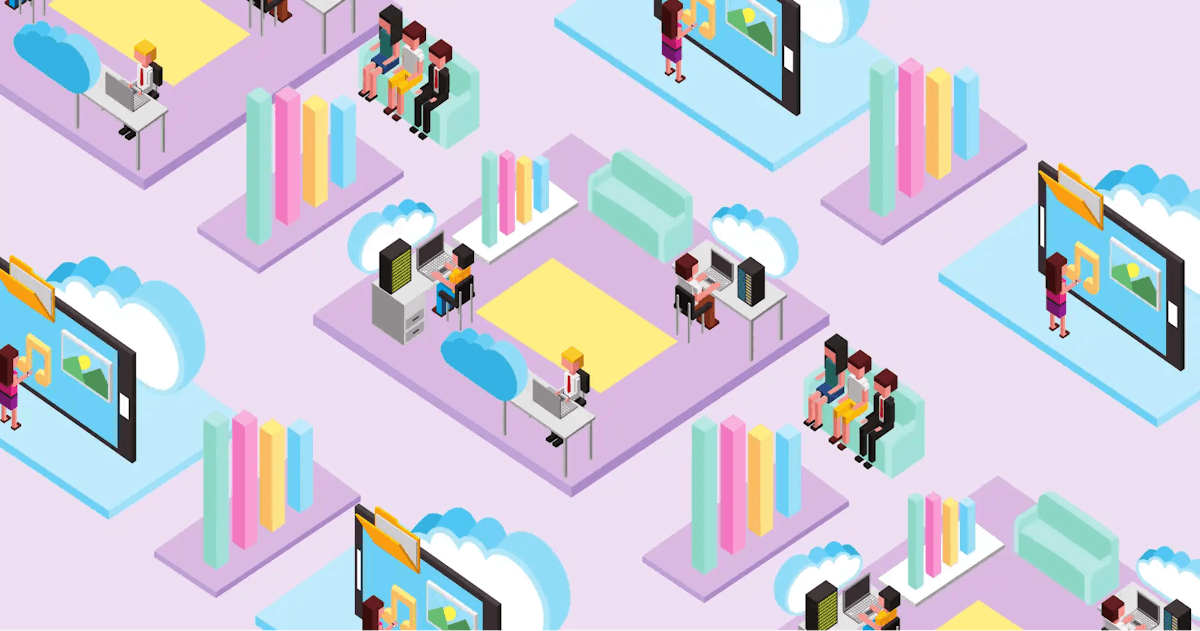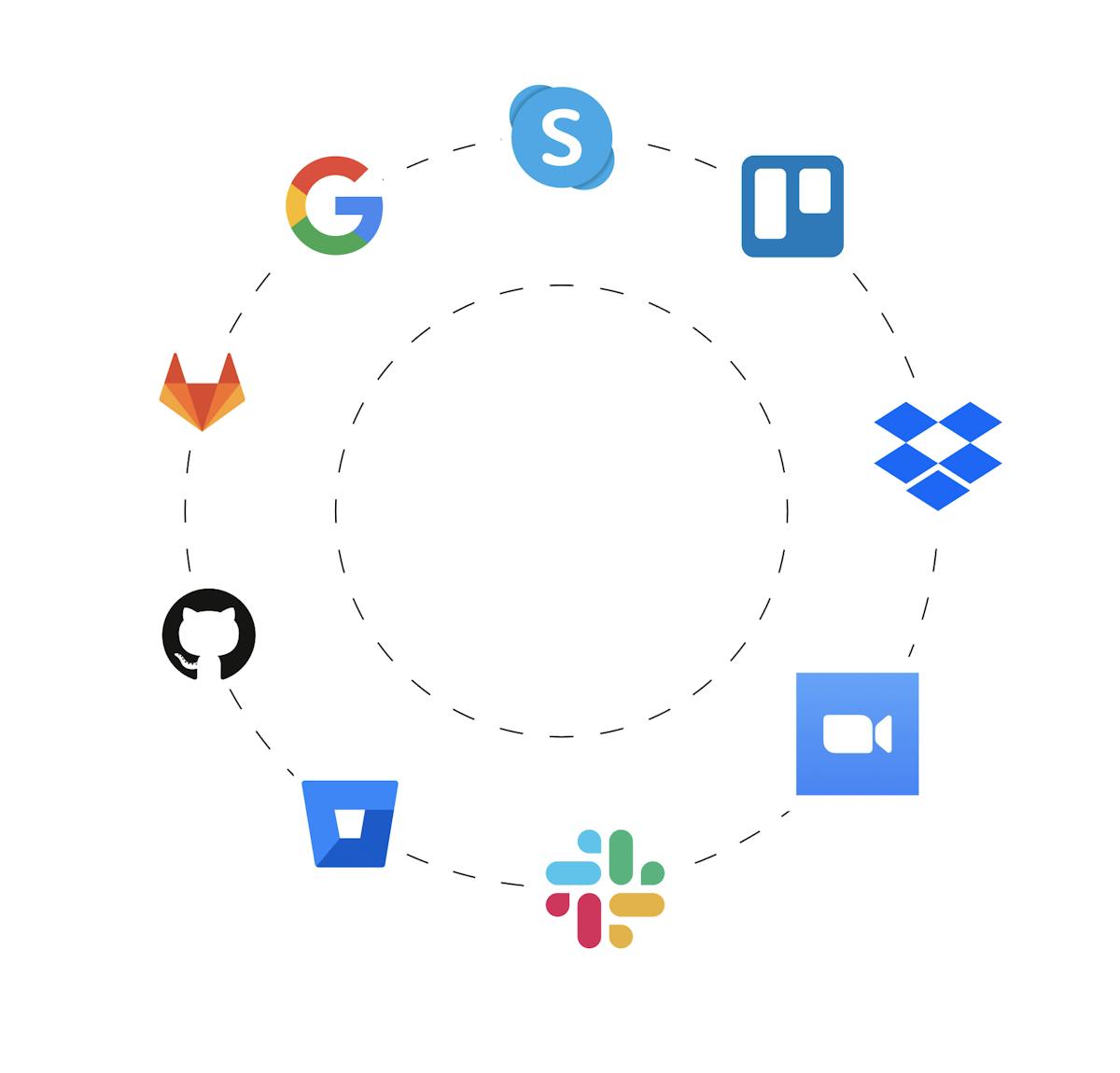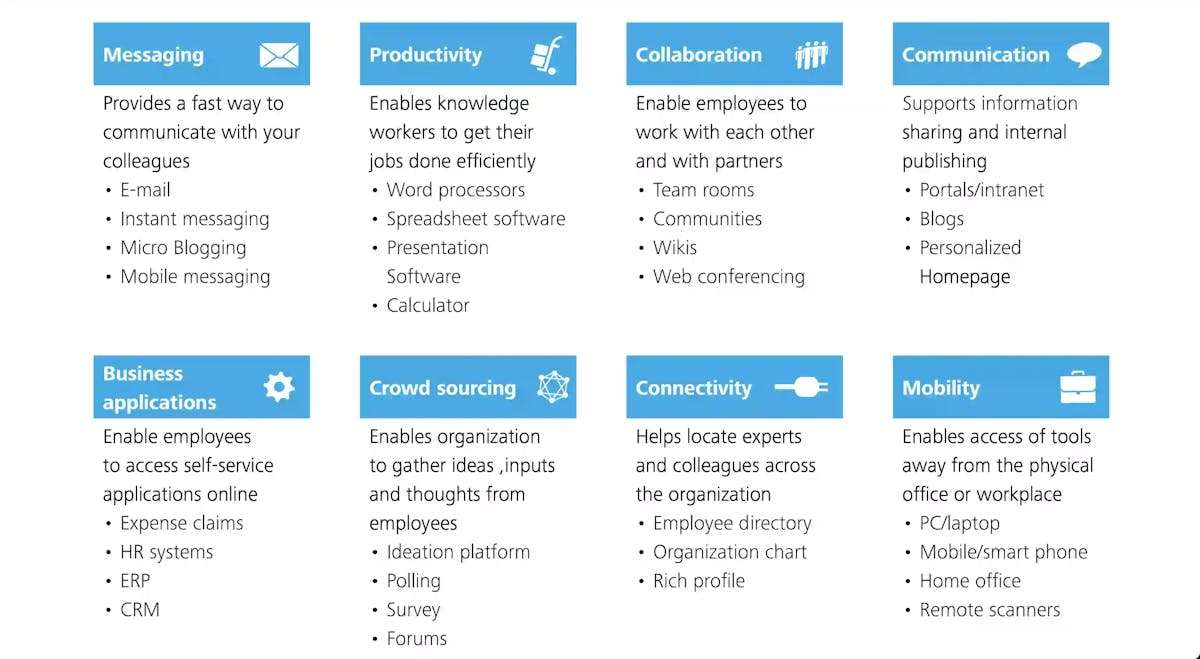The future of work is now – it is the new normal where work has become increasingly digitized, alleviating the everyday work experience of employees, upending notions of location-dependent work environments, and facilitating unprecedented levels of flexibility and productivity. This reality was made possible by the widespread adoption of cloud technology and digital work tools. This technology-enabled intersection of people and processes is defined as the digital workplace.
The Digital Workplace – A Definition
The digital workplace is an evolving way of working. It is a comprehensive digital work environment that is enabled by tools that equip people to work in effective ways. A digital workplace allows flexibility and agility to deliver business results.
A regular workday in a digital workplace might involve: Employees work using collaborative tools such as Miro and Notion, communication apps such as Slack and Zoom, document sharing platforms like Google, design platforms such as Figma, project management platforms such as Jira, Clubhouse, Linear, and Clickup, content management systems, cloud storage tools, and many more.
In this workplace:
- Success depends on the seamless intersection of people, technology, and processes.
- Communication takes a leading role in establishing rules, processes, and success metrics.
- Productivity and engagement are prioritized rather than a focus on presenteeism.
- All operations are informed and driven by data, allowing more transparency, fairness, and accountability.
The rise of digital interconnectedness allows flexibility in where people work, and the success of asynchronous work facilitates different working styles and work times.
Why adopt a digital workplace?
Organizational flexibility
A digital workplace fosters an asynchronous work environment which is the bedrock of workplace flexibility. By definition, async work allows employees to work at a time, place, and pace that enables them to bring their best selves to work. In a digital workplace, technology that is supported by the right processes enables employees to experience flexibility in terms of work schedules and work environments. The digital workplace removes the need for traditional 9-5 schedules and paves way for work-life balance that fits more coherently with goals, targets, and success metrics.
Better productivity
Productivity is the ability to do better work in a given frame of time. Better work is facilitated by collaboration, better ideas, and the seamless sharing of thoughts and ideas. All these happen easily and inherently using digital tools that power digital workplaces. Streamlined processes, inspired digital collaboration techniques and platforms, faster sharing of information, and a focus on shared goals intersect with human ingenuity to yield an unprecedented level of productivity in digital work environments.








